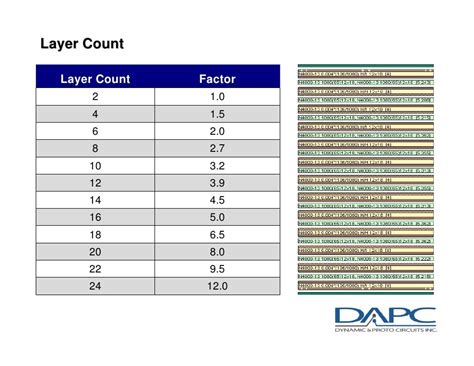Factors Affecting PCB Cost
Several factors play a significant role in determining the cost of a PCB. These include:
PCB Size and Complexity
The size and complexity of a PCB are among the most significant factors influencing its cost. Larger PCBs require more material, which directly impacts the overall expense. Additionally, complex designs with intricate layouts, multiple layers, and high component density will require more time and resources to manufacture, resulting in higher costs.
Number of Layers
PCBs can be categorized based on the number of layers they contain, such as single-layer, double-layer, or multi-layer boards. As the number of layers increases, so does the cost of the PCB. This is because each additional layer requires more material, processing, and time to manufacture. The following table provides a general overview of the cost implications based on the number of layers:
| Number of Layers | Cost Implications |
|---|---|
| Single-layer | Lowest cost |
| Double-layer | Moderate cost |
| Multi-layer (4+) | Highest cost |
Material Selection
The choice of materials used in PCB fabrication also plays a role in determining the overall cost. The most common PCB materials include:
- FR-4: A popular and cost-effective choice for most PCB applications
- High-Tg FR-4: Offers better thermal stability but comes at a higher cost
- Polyimide: Provides excellent high-temperature performance but is more expensive
- Aluminum: Used for heat dissipation in high-power applications, adding to the cost
Quantity and Economies of Scale
The quantity of PCBs ordered significantly impacts the cost per unit. Larger production runs benefit from economies of scale, as the fixed costs associated with setting up the manufacturing process are spread across more units. This means that ordering larger quantities can result in a lower cost per PCB. The following table illustrates the potential cost savings based on order quantity:
| Order Quantity | Cost per PCB |
|---|---|
| 1-100 | $$$ |
| 101-500 | $$ |
| 501-1000 | $ |
| 1001+ | $ |
Surface Finish and Soldermask
The choice of surface finish and soldermask can also affect PCB cost. Some common surface finishes, such as Hot Air Solder Leveling (HASL) and Organic Solderability Preservative (OSP), are more cost-effective than others, like Electroless Nickel Immersion Gold (ENIG) or Immersion Silver. Similarly, the color and type of soldermask used can impact the overall cost, with standard green soldermask being the most economical option.
Lead Time and Expedited Services
The lead time required for PCB manufacturing can also influence the cost. Longer lead times generally result in lower costs, as manufacturers can optimize their production schedules and resources. However, if you require expedited services or quick turnaround times, expect to pay a premium for prioritizing your order.
Strategies for Optimizing PCB Cost
To minimize PCB costs without compromising quality or functionality, consider the following strategies:
Design Optimization
Efficient PCB design is crucial for cost optimization. Work closely with your design team to ensure that the layout is as compact and simple as possible while still meeting the required specifications. Avoid unnecessary complexity, such as excessive layering or overly dense component placement, which can drive up costs.
Standardization
Whenever possible, standardize your PCB designs and components. Using common materials, sizes, and specifications across multiple projects can lead to cost savings through bulk purchasing and streamlined manufacturing processes. This approach also reduces the need for custom tooling and setup, further minimizing expenses.
Supplier Selection
Choose your PCB supplier carefully, considering factors such as reputation, quality, and cost. While it may be tempting to opt for the lowest price, ensure that the manufacturer can consistently deliver high-quality PCBs that meet your specifications. Establishing a long-term relationship with a reliable supplier can lead to cost savings through volume discounts and improved communication.
Testing and Quality Control
Investing in thorough testing and quality control measures can help prevent costly rework and delays. Implement a robust inspection process to catch any defects or issues early in the manufacturing cycle, minimizing the need for expensive repairs or replacements later on.
Frequently Asked Questions (FAQ)
-
Q: What is the average cost of a single-layer PCB?
A: The average cost of a single-layer PCB can range from $0.50 to $5.00 per square inch, depending on factors such as quantity, material, and surface finish. -
Q: How much more expensive are multi-layer PCBs compared to single-layer boards?
A: Multi-layer PCBs can be 2-5 times more expensive than single-layer boards, depending on the number of layers and other design factors. -
Q: Can I reduce PCB costs by using cheaper materials?
A: While using cheaper materials may lower the initial cost, it can lead to compromised performance, reliability, and longevity. It’s essential to strike a balance between cost and quality to ensure the long-term success of your product. -
Q: How can I estimate the cost of my PCB design?
A: Many PCB manufacturers offer online quotation tools that allow you to input your design specifications and receive an instant cost estimate. Alternatively, you can reach out to suppliers directly for a more accurate quote based on your specific requirements. -
Q: Are there any hidden costs I should be aware of when ordering PCBs?
A: Some potential hidden costs include tooling charges, expedited shipping fees, and minimum order quantities (MOQs). Be sure to communicate clearly with your supplier to understand all the costs associated with your PCB order.
In conclusion, the cost of a circuit board depends on various factors, including size, complexity, materials, quantity, and manufacturing processes. By understanding these factors and implementing cost-optimization strategies, you can effectively manage PCB expenses without sacrificing quality or functionality. Work closely with your design team and suppliers to find the best balance between cost and performance for your specific application.


No responses yet